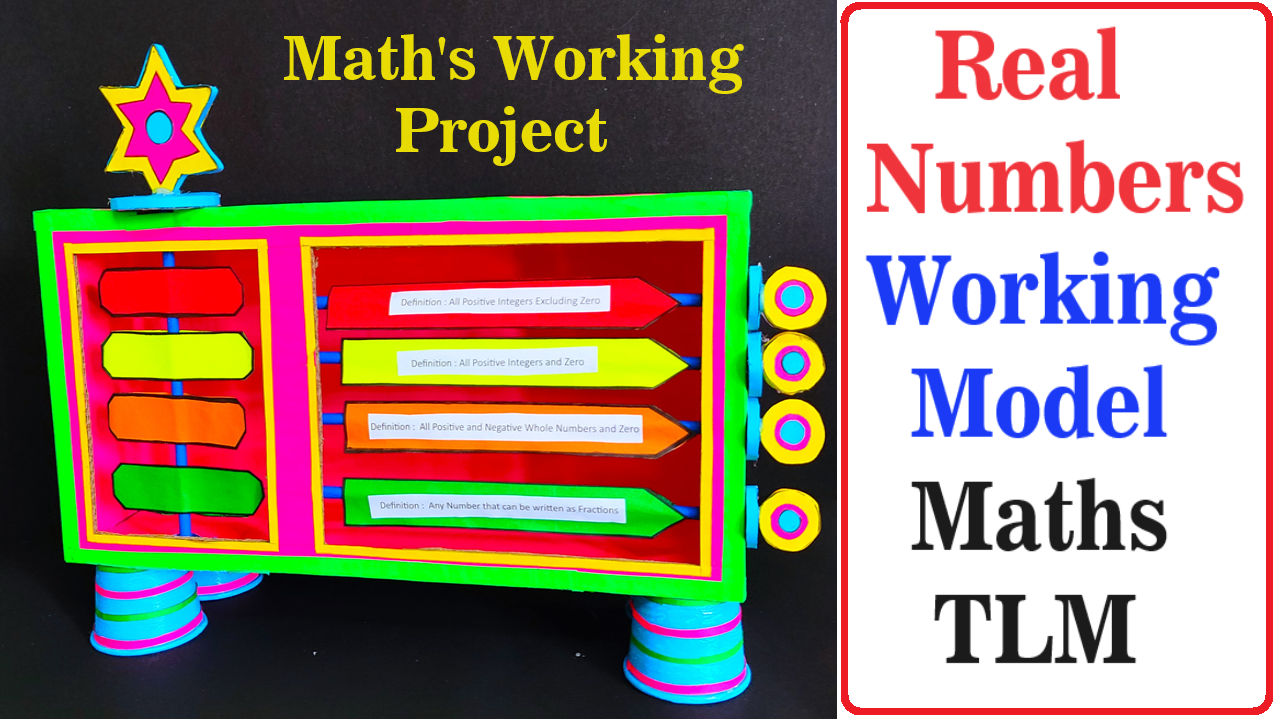The number system is a foundational concept in mathematics that provides a framework for representing, organizing, and manipulating numerical quantities.
It encompasses various types of numbers, including natural numbers, whole numbers, integers, rational numbers, irrational numbers, and complex numbers.
Creating a number system working model for a mathematics teaching and learning material (TLM) is a fantastic idea to help students understand the concepts of different number systems.

Here’s a simple way to make it:
Materials Needed:
- Cardboard or foam board
- Colored paper or markers
- Wooden sticks or dowels
- Glue or tape
- Scissors
- Small containers or cups (optional)
Steps by Step Video Instructions:
1. Prepare the Base:
- Take a piece of cardboard or foam board to serve as the base of your model.
- This will be the foundation on which you’ll build your number system.
2. Represent Decimal System:
- Cut out strips of colored paper to represent digits 0-9.
- Arrange these strips on the base to form the decimal system (0-9) in a horizontal row from right to left.
- Label each strip with its corresponding digit.
3. Add Place Values:
- Use colored paper or markers to write the place values above each digit.
- For example, the rightmost digit will have a place value of 1, the next digit to the left will have a place value of 10, then 100, and so on.
4. Represent Binary System:
- Cut out strips of colored paper to represent digits 0 and 1.
- Arrange these strips on the base to form the binary system (0-1) in a horizontal row from right to left.
- Label each strip with its corresponding digit.
5. Add Place Values for Binary:
- Write the place values above each binary digit, following the powers of 2.
- For example, the rightmost digit will have a place value of 1, the next digit to the left will have a place value of 2, then 4, 8, 16, and so on.
6. Build a Tens Frame for Decimal:
- Use wooden sticks or dowels to create a tens frame for the decimal system.
- Glue or tape the sticks to the base to form groups of ten.
- Label each group with a tens digit (10, 20, 30, etc.).
7. Optional: Add Other Number Systems:
- If desired, you can add representations for other number systems like octal or hexadecimal using similar methods.
8. Display and Demonstrate:
- Once your model is complete, display it in the classroom or at the exhibition.
- Use it to explain the concepts of place value and different number systems to students.
- Show how numbers are represented and how they change as you move between systems.
Explanation:
- The model demonstrates the concept of place value in different number systems, such as decimal and binary.
- It helps students understand how numbers are represented and how place values change based on the system.
- By physically manipulating the strips and place values, students can better grasp the concepts.
This number system working model serves as an effective TLM for teaching and learning mathematics, providing a hands-on approach to understanding number systems.

